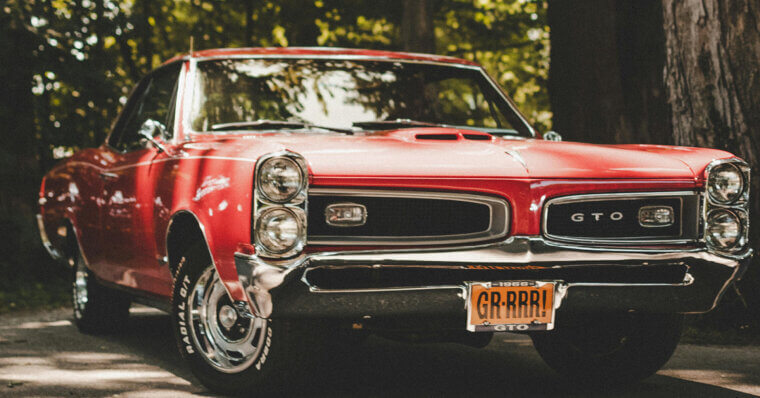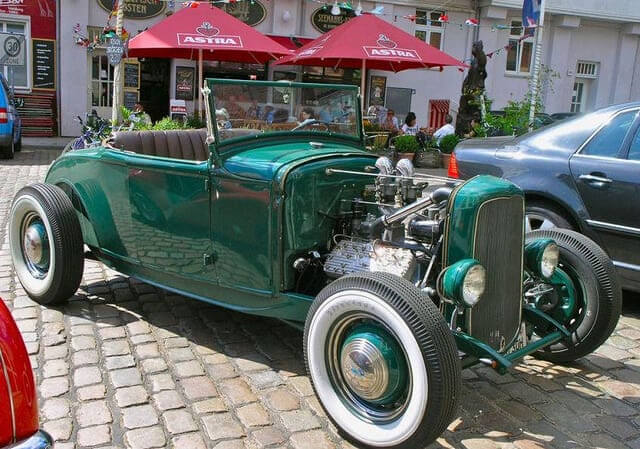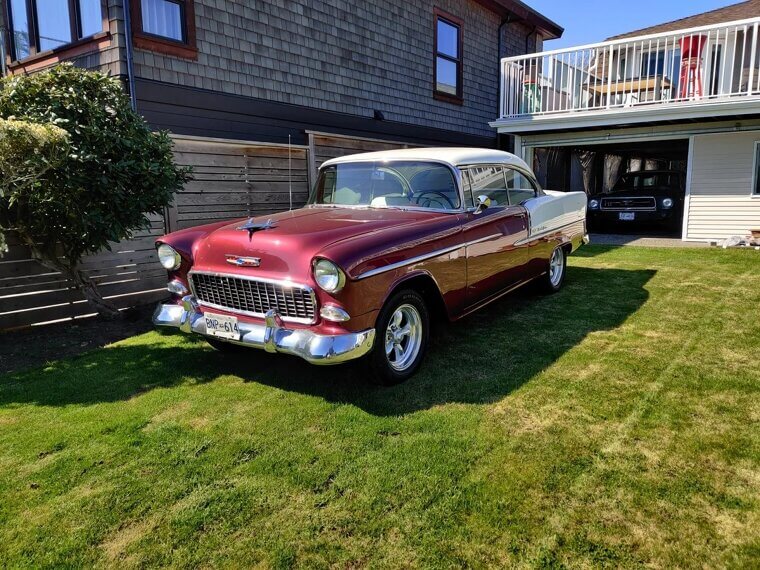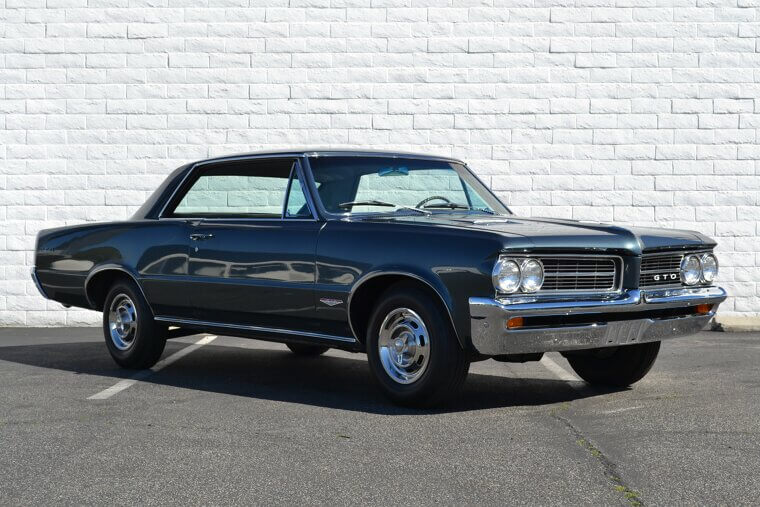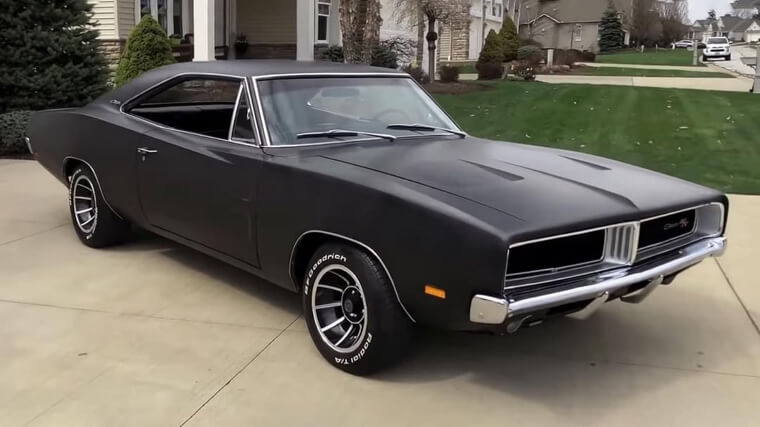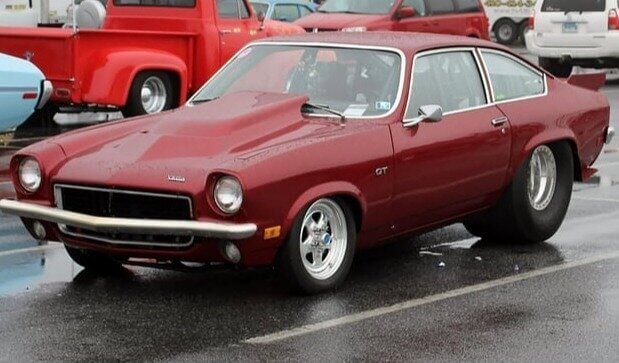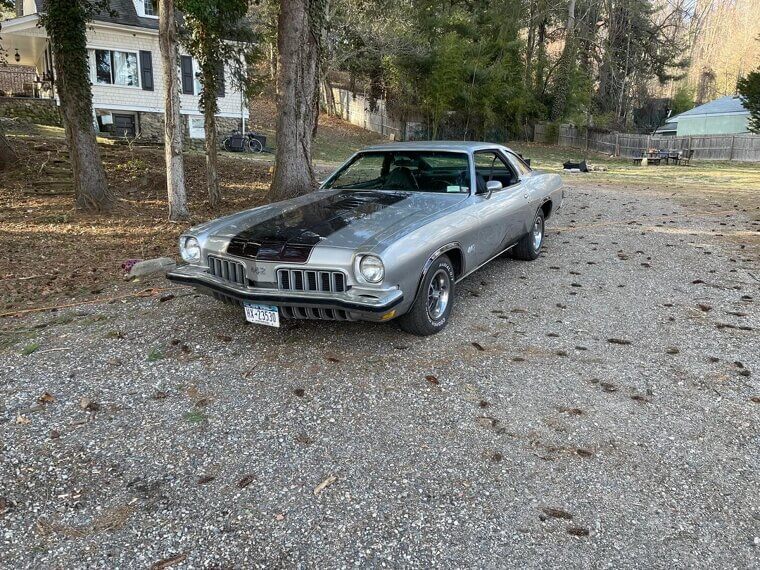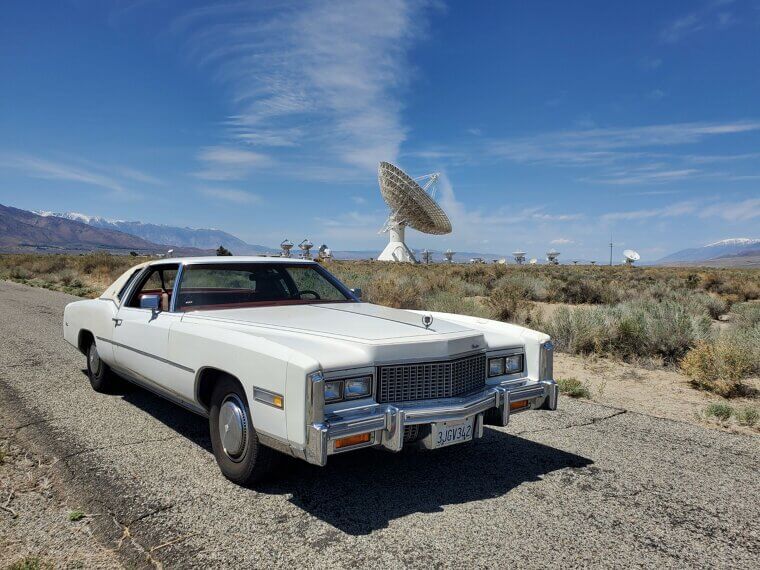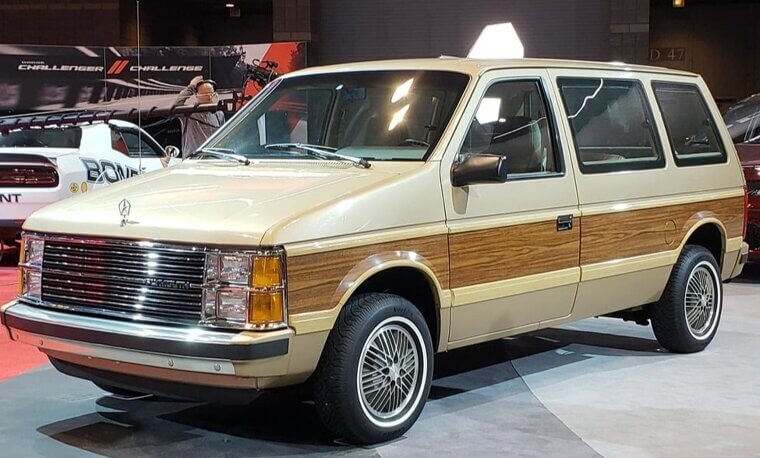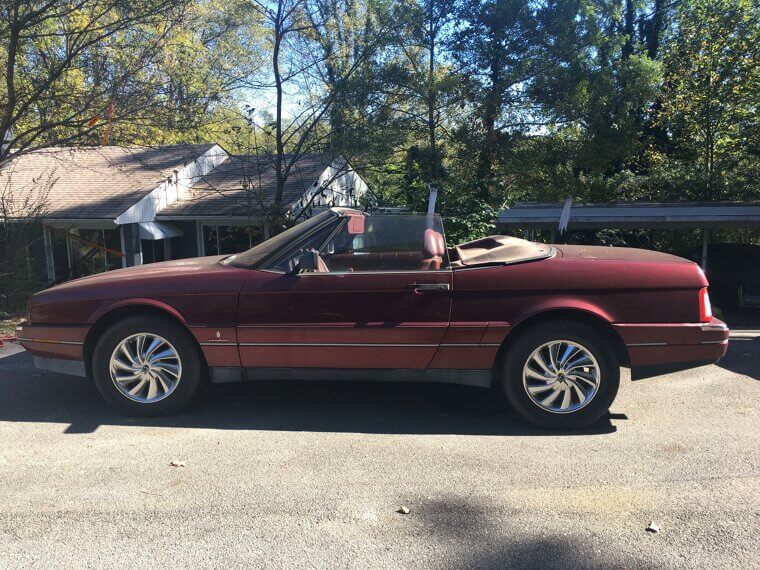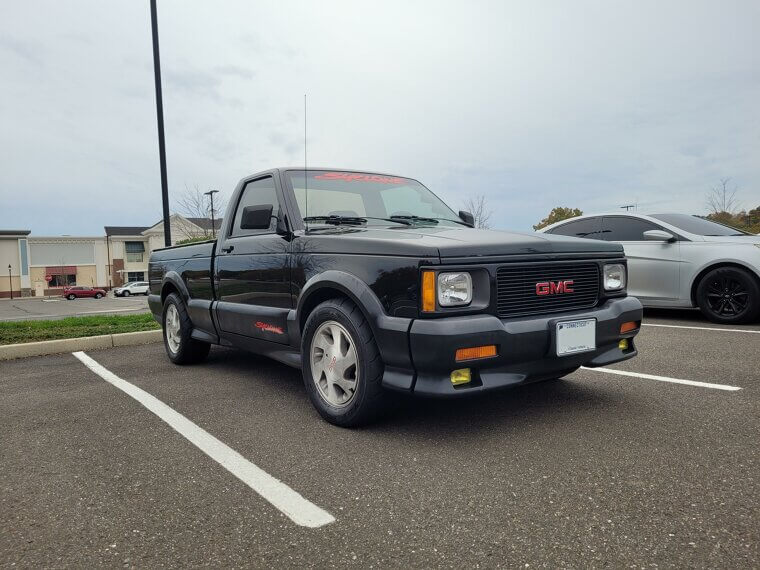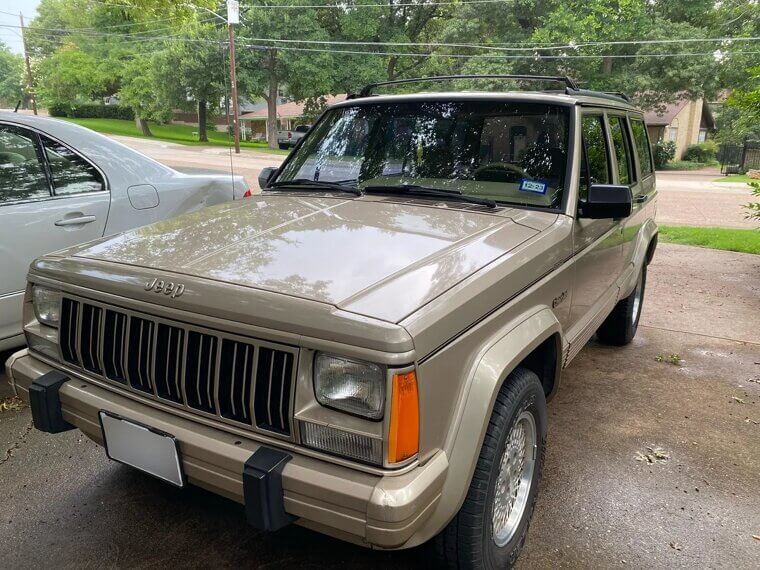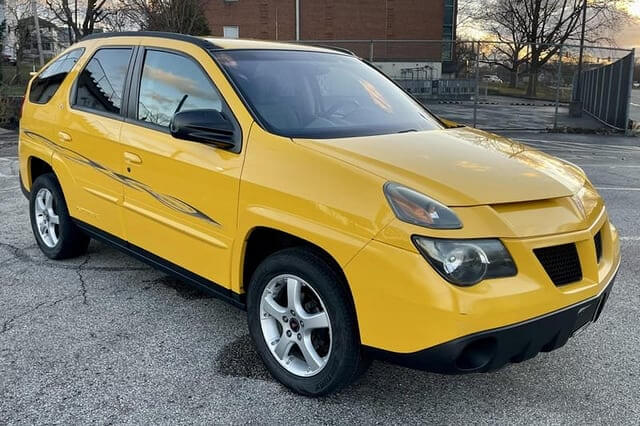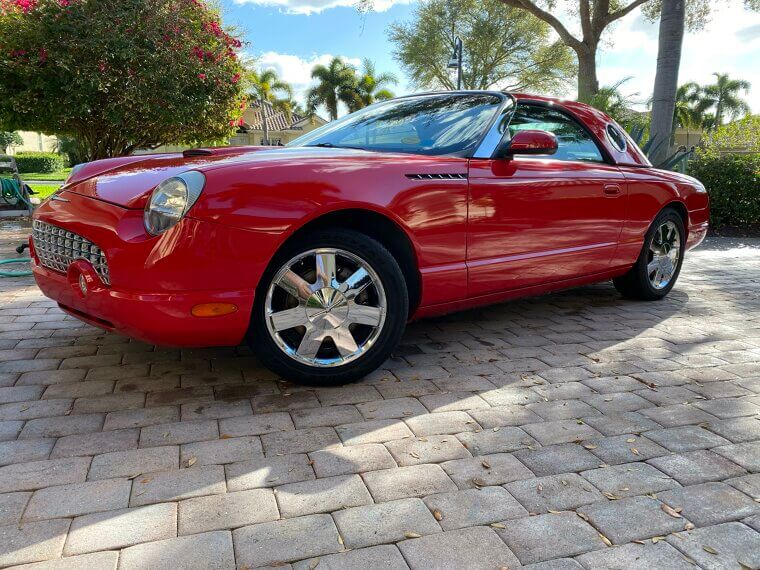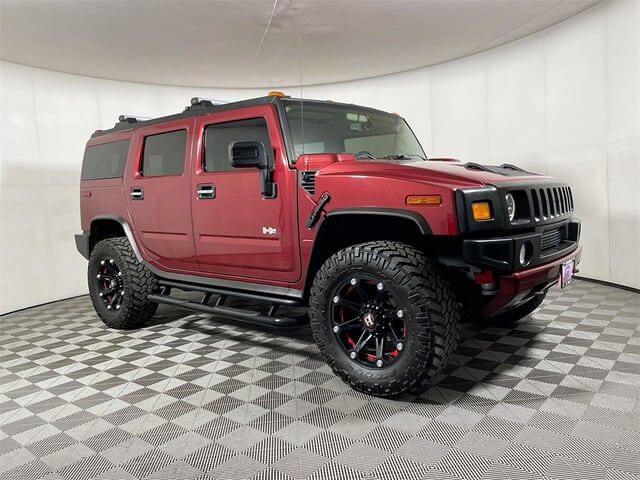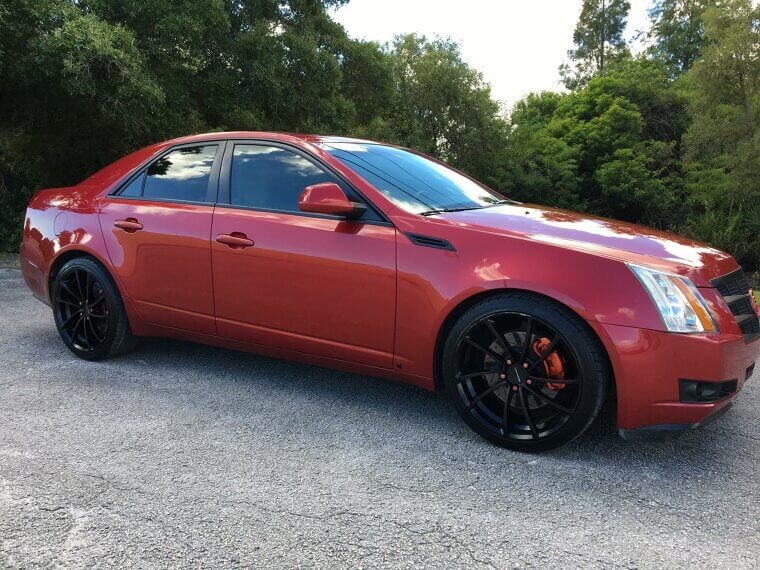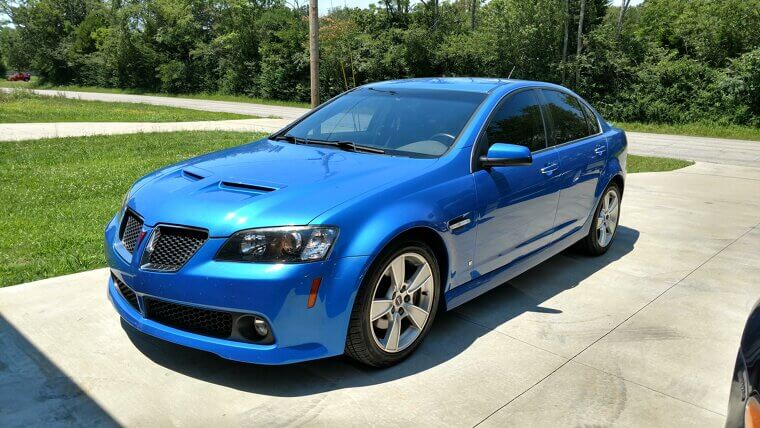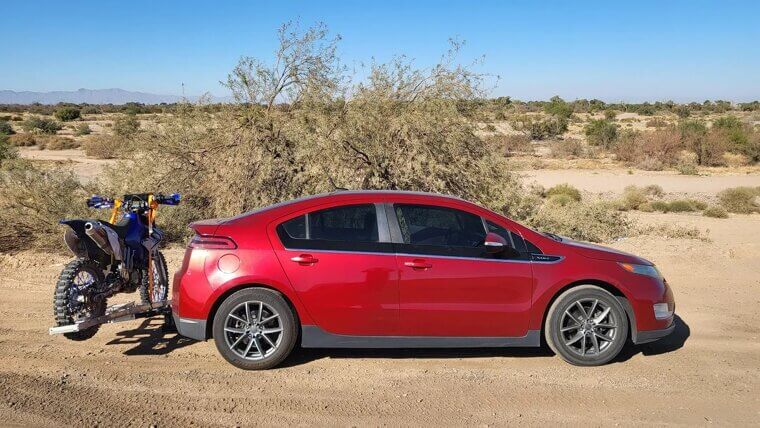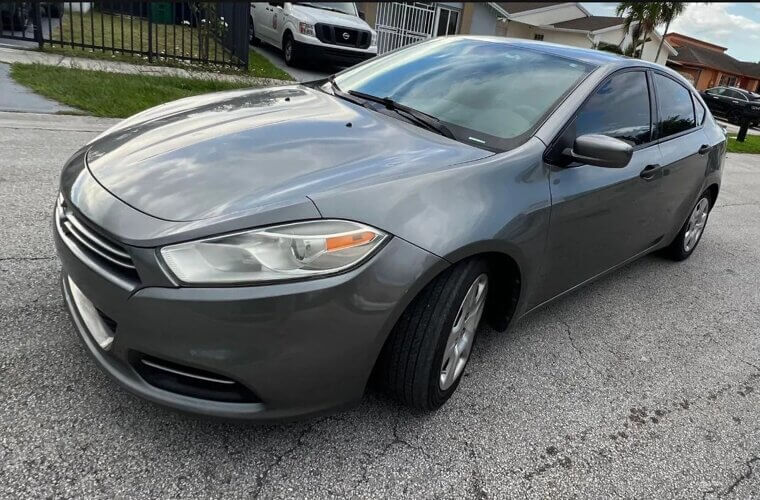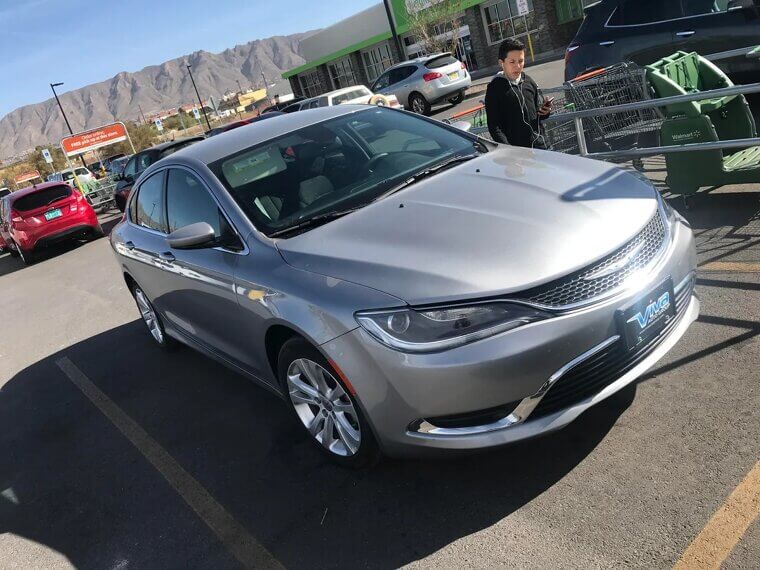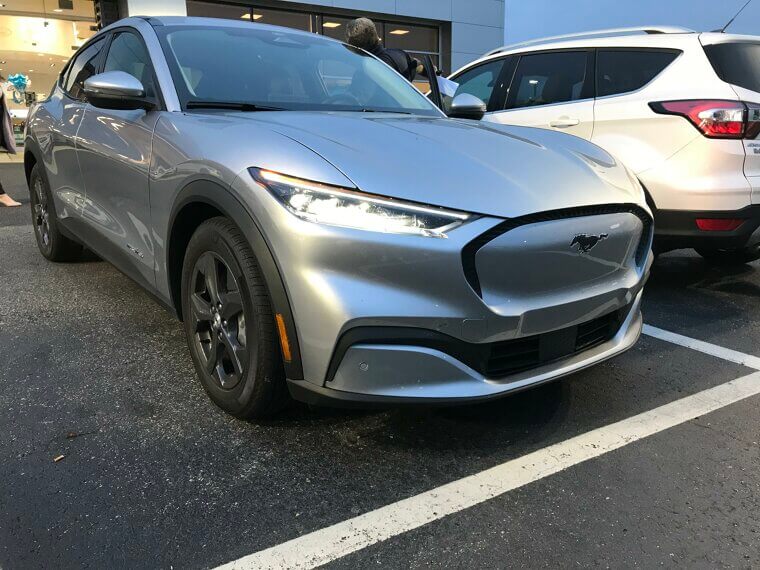The Journey of Detroit's Iconic Vehicles
Detroit didn’t just manufacture cars. It created rolling legends. From sleek cruisers to powerhouse muscle cars, the Motor City fueled America’s obsession with the open road. But not every vehicle was a winner. Alongside the triumphs came missteps, odd designs, and a few unforgettable flops. In this list, we’re taking a look back at some of the most iconic cars that shaped the story of Detroit’s rise and struggles in the auto world. It’s a journey through automotive history filled with style, innovation, and a few surprises along the way. Buckle up and see how Detroit made its mark.
1908 Ford Model T
Let’s start with the car that turned Detroit into the auto capital of the universe. The Model T didn’t just put America on wheels; it revved up mass production like a caffeinated factory line. Thanks to Henry Ford’s assembly line wizardry, this affordable, no-frills machine made car ownership possible for the everyday Joe. It was basic, clunky, and kind of looked like a toaster with wheels, but hey, it was revolutionary. Nearly 15 million rolled off the line, making it the OG of mobility. With this boxy beauty, Detroit didn’t just build a car; it built an empire, one crank-start at a time.
1932 Ford V8
Enter the bad boy era. The 1932 Ford V8 was pure rebellion on four wheels. This beauty brought power to the masses with a booming engine that thrilled teenagers, racers, and bootleggers. And it was still affordable, which made it both iconic and slightly dangerous. It looked like something out of a gangster movie, and, well, it kind of was. Ford changed the performance narrative with the introduction of the V8. They proved that Detroit could build something practical and beautiful that was also fast, fierce, and sexy. The V8 was horsepower democratized, and the streets were never the same.
1955 Chevrolet Bel Air
The '55 Bel Air was a rolling slice of Americana, with its full chrome grin and tailfin swagger. This was postwar optimism in vehicle form—sleek, stylish, and screaming, “Let’s cruise to the drive-in!” Chevrolet hit a home run with this midcentury dreamboat and created a shiny new image for Detroit. It had color options that would make a jellybean jealous and a V8 that purred like a lounge singer. The Bel Air wasn’t just a car; it was a lifestyle. With it, Motor City proved that cars could be fashion statements on wheels.
1964 Pontiac GTO
And then came the muscle. The ’64 GTO, aka the “Goat,” launched a horsepower arms race that gave Detroit its brawny, bicep-flexing era. This was the rebel child of Pontiac engineers who slipped a big engine into a midsize car and basically invented the muscle car segment. It looked like trouble and drove like it had something to prove. The GTO didn’t tiptoe; it roared. Teens adored it, parents feared it, and every other automaker scrambled to catch up. It was the kind of car that made you roll your sleeves up and smirk. With the GTO, Detroit wasn’t just building cars; it was flexing.
1966 Ford Mustang
Hello, pony car perfection. When the Mustang arrived, jaws dropped, and wallets flipped open. It looked like a sports car, cost like a sedan, and had the attitude of a rock star. Ford couldn't build these things quickly enough—literally. The Mustang democratized sporty driving, made it sexy and kind of rebellious. It was the prom king of the American road, cementing Detroit’s dominance in car culture. And let’s not forget its star turns in movies and music. This car was the vibe. If the GTO was raw muscle, the Mustang was swagger with a steering wheel.
1969 Dodge Charger
If cars had an attitude problem, the ’69 Charger would be their ringleader. With its menacing grille, fastback roof, and a V8 that practically snarled, this was the muscle car that growled louder than its rivals. And thanks to The Dukes of Hazzard, it earned TV immortality as the airborne General Lee. It was more than a car. It was a rebellious middle finger to speed limits. Dodge gave Detroit a car that was part menace, part magic. It guzzled gas like it was chugging Gatorade, but nobody cared. The Charger was wild, reckless, and unapologetically American. Subtle? Nope. Iconic? Every bit.
1971 Chevrolet Vega
Ah, the Vega, a shining example of when Detroit flew too close to the sun. Chevy was trying to fight off the imported compacts with this cute little thing. On paper, it was not a bad idea. In real life? A mechanical soap opera. It had an aluminum engine that would overheat; rust attacked it like termites on toast, and quality control waved the white flag early. Yet, for all its flaws, the Vega symbolized Detroit’s scramble to pivot as gas prices rose and small cars gained steam. It was cute, ambitious, and tragically overcooked. The Vega had real potential; it just failed to stick the landing.
1973 Oldsmobile Cutlass Supreme
The ‘70s were odd, but the Cutlass Supreme was a total vibe. It wasn’t gaudy like a muscle car or practical like a hatchback; it was like a rolling living room that was channeling land yacht energy. It had plush seats, fake wood trim, and a soft ride that made it the king of quiet suburban driveways. It actually became the best-selling car in America for several years, proving Americans valued comfort more than cornering. The Cutlass was not thrilling, but it was dependable and unbelievably popular. Detroit embraced luxury-lite, and Oldsmobile hit the jackpot. Just don’t try parallel parking it without a spotter and a prayer.
1976 Cadillac Eldorado Convertible
This was Detroit’s last convertible before they (briefly) declared drop-tops extinct. And wow, did the Eldorado go out in dramatic fashion. It was longer than your driveway, stuffed with every gizmo imaginable and slathered in chrome like it was frosting. It oozed luxury the way disco oozed glitter. Drivers felt like royalty even if the car handled like a yacht in choppy seas. Cadillac basically said, “If this is the end, we’re going full peacock.” People lined up to buy the “last American convertible” and turned it into a collector’s gem overnight. Excessive? Absolutely. But in the ‘70s, subtlety wasn’t in Detroit’s vocabulary.
1981 DeLorean DMC-12
Oh, DeLorean, you stainless steel heartthrob. With gullwing doors and a body made for sci-fi dreams, this Detroit-born wild card looked like something that rolled in from another time and space. Unfortunately, it drove like a shopping cart with delusions of grandeur. Underpowered and overpriced, the DMC-12 fizzled fast until Back to the Future resurrected it into legend. Detroit wanted an automotive phoenix but got an automotive cautionary tale instead. Still, you can’t deny the flair. It’s a rare mix of failure and fame, wrapped in brushed metal and time-travel vibes. For a car that went belly up, it certainly aged into a pop culture phenomenon.
1984 Chrysler Minivan
Not pretty, but totally awesome. The Chrysler minivan was the suburban superhero no one saw coming. With sliding doors, a flat floor, and endless cargo space, it made road trips survivable and school runs tactical. Soccer moms rejoiced, station wagons wept, and Detroit suddenly had a hit that wasn’t trying to be sexy. The minivan wasn’t built for burnout contests; it was built for juice boxes and backseat chaos. Chrysler cashed in, reshaped family travel, and accidentally invented the “dad van.” It may not have had muscle, but it had magic and cup holders. Lots of cup holders. A quiet revolution in sensible shoes.
1986 Buick Riviera (with Touchscreen CRT! )
Hold your rotary phones—this baby had a touchscreen. That’s right, the ’86 Riviera offered an in-dash CRT screen before anyone knew what a “smart” car was. You could control the radio, climate, and trip info from this grainy little monitor—basically the grandmother of your Tesla display. Too bad it was super glitchy, hard to read in daylight, and about 20 years too early. Buick swung for the tech fences and tripped over its loafers. Still, it was bold and bizarre in the best way. Detroit was trying to innovate, even if it looked like a microwave wedged into your dashboard.
1986 Ford Taurus
Aerodynamic and proud of it, the Taurus ditched the boxy look for swoops and curves. It was the car that screamed, “Welcome to the future!” at least in a very beige, practical kind of way. Ford poured its hopes into this family sedan, and for a while, it worked. People loved it. It even helped pull Ford out of a slump. But success brought imitators, and eventually, the Taurus faded into fleet-car oblivion. Still, the original was groundbreaking in its nerdy, risk-taking way. It wasn’t sexy, but it was smart. And let’s be real, it looked great in a driveway next to dad’s grill.
1987 Cadillac Allanté
Cadillac wanted to appeal to the Euro crowd, so it came up with the Allanté, a snazzy roadster with Italian styling and Detroit guts. The body was hand-built by Pininfarina in Italy, flown to the U.S. on specially outfitted Boeing 747s, and mated to a Detroit chassis. Sounds pricey? It was. Regrettably, the performance didn't live up to the hype, and buyers weren't thrilled with the price tag. But what a flex. The Allanté was Cadillac saying, "We're still in the luxury business, thank you very much." Glamorous? Yes. Practical? Not even a little. It's the automotive equivalent of a designer handbag in a tailfin shape.
1991 GMC Syclone
This little black pickup truck didn’t just look mean - it was mean. The GMC Syclone was a turbocharged menace that could outrun Ferraris off the line. Zero to sixty in under five seconds? In a truck? Yes, please. GMC basically said, “Why not make a street racer out of a delivery vehicle?” and we’re so glad they did. It was absurd, hilarious, and brilliant all at once. But its price tag and niche appeal made it more legend than bestseller. Still, car nerds drool over it to this day. The Syclone proved Detroit could do crazy cool performance when it really wanted to.
1993 Jeep Grand Cherokee
Talk about an entrance. The Grand Cherokee crashed through a plate glass window at the Detroit Auto Show for its debut. Subtle? Not even close. This SUV turned heads and turned the tide, bringing rugged capability into suburban garages everywhere. It blended off-road cred with leather seats and cupholders, aka everything the '90s family didn’t know it needed. Jeep struck gold by making you feel like an explorer on the school run. The Grand Cherokee led the SUV revolution in serious style when utility still meant you could drive over a boulder without spilling your latte.
1994 Ford Mustang (SN95)
The Mustang was having a bit of a midlife crisis when Ford gave it a fresh face in 1994. Out went the Fox body, and hello, curves! This SN95 gen was a rebirth moment, with throwback nods and just enough ‘90s sass to keep the muscle car spirit alive. It wasn’t the fastest on the block, but it had charm, charisma, and plenty of “cool kid” appeal. Ford knew the Mustang was its crown jewel and treated it accordingly. Sure, some purists grumbled, but this car helped steer Detroit out of a horsepower drought. It proved the pony car still had plenty of gallop left.
1996 Saturn SL1
Ah, Saturn, GM’s splendid experiment in building a “different kind of car company.” The SL1 was simple, affordable, and wrapped in dent-resistant plastic panels that felt like Tupperware with headlights. People loved the no-haggle pricing and the warm-and-fuzzy showroom vibe. It felt like buying a car from your neighbor’s kid who also sells Girl Scout cookies. No, it was not glitzy, but it was dependable and just quirky enough to stand out. However, as time passed, Saturn's uniqueness faded, and GM's enthusiasm waned. Eventually, the SL1 became a footnote in Detroit’s “What if?” file.
1999 Pontiac Aztek
The Aztek was the SUV that sparked a thousand criticisms about design. It looked like a spaceship by committee and had no shortage of clashing angles. And while the exterior looks horrible, the Aztek was actually a pretty useful vehicle. It had a ton of room, had some pretty neat camping features, and even came with its own cooler. In some ways, the Aztek was ahead of its time, but it lacked taste. Despite flopping in the showroom, the Aztek eventually gained cult status, thanks in part to a certain chemistry teacher on Breaking Bad. Ugly? Arguably. Useful? Absolutely. The Aztek is proof that weird can still work.
2002 Ford Thunderbird
This one was supposed to be a comeback story. Ford resurrected the cherished T-Bird name, added some retro curves, and imbued it with two seats of nostalgia. Car lovers swooned at first. Then reality hit: lackluster performance, a hefty price tag, and a vibe that screamed “midlife crisis starter pack.” While the 2002 T-Bird looked pretty good at the valet stands or in weekend photo ops, it just didn’t have the horsepower to back up the attitude. Detroit bet on the power of sentiment, but the spark didn’t last. The Thunderbird went out (again), not with a bang but a glamorous shrug. At least, it looked good doing it.
2003 Hummer H2
If subtlety had an archenemy, the Hummer H2 would be it. Created with military roots and 90s excess, this rolling tank was Detroit's attempt to make brawn fashionable. It guzzled gas like it was chugging Mountain Dew, and parking one felt like docking a yacht. Yet, people loved it, especially if they wore wraparound sunglasses indoors. But, as gas prices soared and everyone switched to greener rides, the H2 quickly fell from grace. Still, for a brief moment, it was the baddest beast on the block. Impractical? Totally. Iconic? You bet.
2004 Chevrolet Malibu Maxx
Meet the Chevy Malibu Maxx, a strange little car that felt like a mullet in hatchback form: business in the front, party in the cargo area. This oddball wagon came with rear seats that reclined (what?!), a built-in DVD player, and a rear sunroof that made you feel fancy-ish. Sadly, its looks were not its strong suit. With proportions only a design student could love, the Maxx confused buyers and critics alike. It was Detroit trying something new, maybe too new. Was it weird? Yep. Lovable? Well, maybe if you squinted.
2005 Ford GT
Talk about a flex from Detroit. The 2005 Ford GT was a spectacular retro rocket. It was an homage to the Le Mans, winning GT40 of the '60s. Armed with a supercharged V8, outrageous curves, and not the least bit interested in being subtle, it was Detroit giving us the full muscle car experience, and we loved every second. Built for speed and nostalgia, it became an instant collector’s dream. The GT was built for speed and nostalgia, and that's why it instantly crushed on the collector car scene. It wasn't cheap, it wasn't practical, and it guzzled gas, but no one cared.
2006 Dodge Charger
The Charger came roaring back in 2006 with four doors, a bad-boy attitude, and a HEMI under the hood. Muscle car purists wailed, “Where’s the coupe?!” but Dodge didn’t care. This sedan had swagger, speed, and the kind of face that said, “Move or be moved.” Cops loved it. So did anyone with a need for speed and enough trunk space for groceries and guilt. Detroit gave a classic a modern twist, and the gamble paid off. It wasn’t trying to be the past; it was reinventing it.
2008 Cadillac CTS
Cadillac decided it was tired of being your grandfather’s couch on wheels. The 2008 CTS strutted in with sharp lines, bold angles, and a “watch out, Germany” attitude. Suddenly, Cadillac was not just about whitewalls and golf carts anymore; it was luxury with an attitude. Reviewers raved about it, drivers grinned, and Detroit smiled. This Cadillac was a real player, taking shots at BMW and Audi like they were just some riff-raff toying with the big boys. It handled like a dream, looked like a stealth fighter, and had the audacity to make people say, “Wait, that’s a Cadillac?”
2009 Pontiac G8
The G8 arrived when life support was barely keeping Pontiac alive. It growled with a V8 under the hood and dressed like a business suit with a bar fight hidden inside. Branded in Detroit but imported from Australia, this performance sedan had BMW aspirations on a blue-collar budget. It handled brilliantly, looked mean, and proved Pontiac still had muscle left. Unfortunately, it was too little, too late. GM pulled the plug on Pontiac just a year later, leaving car enthusiasts weeping into their gear oil.
2010 Chevrolet Volt
Chevy introduced this futuristic plug-in hybrid into showrooms, and all of a sudden, Detroit had a ticket to the future. The Volt avoided range anxiety and gave drivers a sense of practicality and environmental responsibility by combining an electric drive with a gas-powered backup. It wasn't ostentatious, but it was smart, effective, and surprisingly enjoyable to drive. It appeared for some time that the Volt would begin a silent revolution. However, the Volt did not keep up with the rapid advancements in electrical technology. In the end, it helped others reach new heights but never quite took the throne for itself.
2013 Dodge Dart
Dodge tried to get cute with the Dart. They took an old name to name a compact aimed at millennial buyers. They threw on some custom colors, funky features, and all the hope they could muster. But what they ended up with is a glorified rental car with a great skincare regimen. The style was sharp, but performance and quality? Meh. Made with Fiat DNA and marketed by Detroit, the Dart never really hit its target. Critics panned it, buyers shrugged, and within a few years, it vanished into the land of “Nice Try.” It wasn’t awful, but it was forgettable. And in the car world, that’s often worse.
2015 Chrysler 200
With the 200, Chrysler made a bold move to bring excitement back to mid-size sedans. Sleek design? Check. All-wheel drive? Check. Fancy interior touches? Check. However, appearances can only get you so far. Beneath the glitz and glam was a small rear seat, a perplexing rotary shifter, and "meh" driving dynamics. Yes, it had potential, but Detroit soon saw that the future wasn’t sedans. Sales fizzled, FCA cut its losses, and the 200 quietly rode into the sunset.
2020 Ford Mustang Mach-E
Slapping the Mustang badge on an electric crossover? Bold move, Ford. Traditionalists were outraged, but Ford knew the future was electric, and it needed a head-turner. The Mach-E was sleek, fast, and tech-savvy, shaking up the EV scene with real Detroit swagger. While purists still grumble into their garage toolboxes, the Mach-E has won over a new crowd and made Ford a legit EV player. Call it a gamble, call it sacrilege, but it’s working. Detroit didn’t just join the EV race; they pulled a smoky burnout into the lead.

